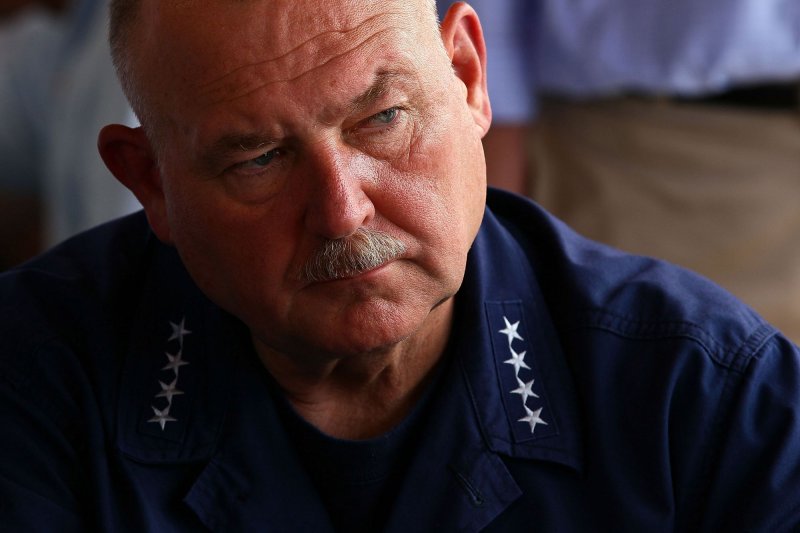1 of 2 | Adm. Thad Allen listens as U.S. President Barack Obama meets with local leaders during a visit June 4, 2010 in Grand Isle, Louisiana. This is President Obama's third visit to the State of Louisiana since the Deepwater Horizon incident in the Gulf of Mexico. UPI/Win McNamee/Pool |
License Photo
THEODORE, Ala., June 6 (UPI) -- U.S. Coast Guard Adm. Thad Allen said Sunday the collection of oil spilling into the Gulf of Mexico had increased to 10,000 barrels in the past 24 hours.
Allen, the national incident commander who appeared on ABC's "This Week" and other network news programs, said that amount was up from 6,000 barrels the day before. The destroyed Deepwater Horizon oil rig has been pouring an estimated 19,000 barrels a day into the gulf since April 20.
"We're not going to know how much oil is coming out until we're able to optimize the production, and that's what they're doing right now," Allen said on "This Week."
BP and others have said the ultimate solution will be two relief wells being drilled nearby that won't be completed until August.
The admiral said the containment effort hasn't included the use of tankers to vacuum up the oil as the Saudis did during a 1993 spill because of "a couple of issues."
"No. 1, the tankers actually have to be modified. They're not ready to go right now," he said. "No. 2, we don't know what those modifications will do to the stability of the vessels and how they operate. No. 3, the area of operation is very, very different. We've got anywhere from 20 to 30 vessels within a one square mile over the top of that well at any particular time, managing remotely operated vehicles, doing the drilling the relief wells and so forth, so it's not -- I'm not sure it's the right application for that technology."
During a briefing with reporters Sunday, Allen said wind has driven the northern edge of the spill perimeter "closer to Mississippi-Alabama."
"In Florida we're actually starting to see product come ashore in the form of tar balls and small oil patties," he said. "And the impact is from western Mississippi over towards Pensacola."
Allen said oil is expected to begin moving north and slightly east.
"The area we're concerned about is basically from the Mississippi-Louisiana line clear over to Port St. Joe in Florida."
Allen said on ABC the best way to fight "an insidious war" against the oil slick is with offshore skimmers and burning above the well.
"There are a number of slicks. One of the problems with this entire spill is it's not a monolithic, huge spill," he said. "Depending on when the oil came to the surface and the wind and the current, it's disaggregated itself into hundreds, maybe thousands of smaller pieces of oil. So we're trying to fight it on a lot of different fronts."
Asked about whether there are enormous underwater plumes of oil as some have warned, Allen said research vessels have been dispatched to take samples to create "a massive model of what the gulf looks like."
Allen reiterated his previous statements that BP has been forthcoming with accurate information about the leak when he asks for it.















